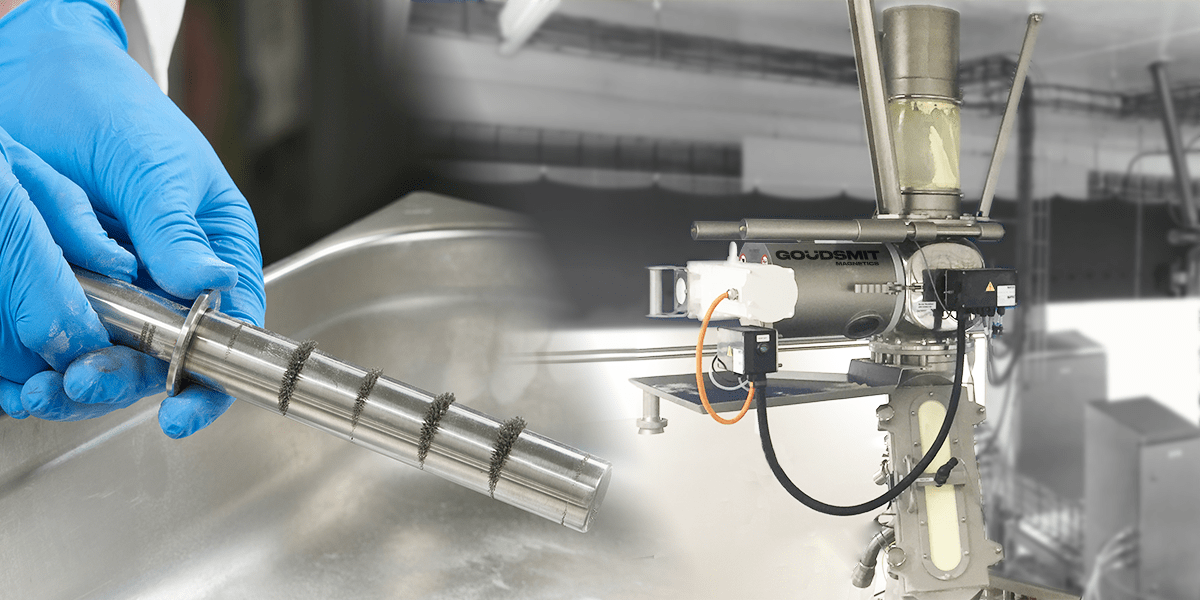When it comes to protecting food from metal contamination, magnetic separation is a widely used and effective method in the food industry. Metal contamination not only contaminates your product, but can also cause serious damage to machinery. Rejected batches are costly, but the consequences of failing to identify and remove metal contaminants are even worse when you consider health risks, product recalls and reputational damage.
Examples of metal contaminants or foreign bodies in the food industry are staples, nails, screws, loosening bolts and nuts, steel or stainless steel -wear particles from machinery, rust, corrosion or metals entering the crop. Magnetic separators remove metal contaminants from your product stream, increase product quality and prevent damage to your machinery.
To apply magnetic separation and minimise the risk of metal contamination in the food industry, the following steps are important:
1. Recognise the source of metal contamination entering your food processing line. Does it arise during harvesting, from packaging materials, machinery or human intervention? This helps in choosing the right magnet system, as well as the transport method.
2. Conduct a risk assessment: Assess the risk of metal contamination at different stages of your food processing line. Identify the critical control points where you can effectively apply magnetic separation to remove metal contaminants.
3. Select the right magnetic separator: Choose a magnetic separator suitable for your specific application. Consider factors such as food type, flow rate, internal material finish, particle size and contamination amount. But also the transport method: free-fall line, pressure line or belt transport. We will be happy to advise you so that you can be sure to install the most suitable magnetic separator.
4. Install magnetic separators strategically: Place magnetic separators at key positions in your production line where metal contamination can occur. Common locations are at raw material intake, material-handling equipment (conveyors, chutes, dosing units) and processing equipment (mills, mixers, blenders, sieves). Ensure that magnetic separators are easily accessible for maintenance and cleaning.
5. Inspect and maintain magnetic separators regularly: Implement a routine inspection and maintenance schedule for your magnetic separators. Check for signs of wear, damage or loss of magnetic force. Clean magnet systems regularly to prevent accumulation of contaminants and maintain their effectiveness. If required, we will perform annual magnet measurements for you, issuing a certificate for quality purposes such as HACCP and company audits.
6. Train employees: Train your employees on the risks of metal contamination, the importance of magnetic separation and the correct procedures for handling and maintaining the equipment. Encourage a culture of awareness and vigilance in identifying and reporting potential incidents of
metal contamination. Are there changes in output, or does the quantity remain the same? The former may indicate a problem in the process line, for example. Goudsmit magnetic separators have special capture trays or collector trays which allows you to properly analyse iron contamination in the lab.
7. Stay abreast of standards and regulations such as food safety regulations and industry standards related to metal contamination and magnetic separation. This will help you manage your processes in the best possible way. Ensure compliance and apply best possible means in your food processing operations.
Important to know: magnetic separation is only one part of a comprehensive food safety programme. It is important to complement it with other preventive measures such as good hygiene, employee sanitation and effective quality control procedures to ensure the overall safety and quality of your food products.
For more information please use the contactform

